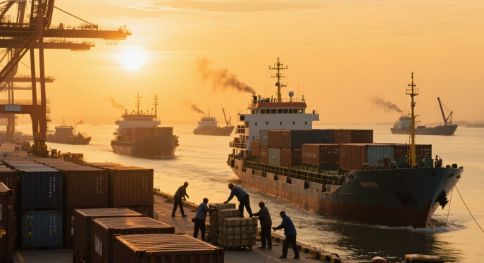China to USA Sea Freight: Key Updates for June 2025
Release time:
2025-06-09
As global trade continues to evolve in 2025, the China to USA sea freight sector is facing several challenges and opportunities. This week, key developments in shipping logistics and pricing trends are making waves, and importers should stay informed to optimize their operations.
1. Rising Shipping Costs and Rates
Shipping rates from China to the USA have shown significant fluctuations as the global market recovers from the COVID-19 pandemic's residual impacts. This week, reports indicate that rates for both FCL (Full Container Load) and LCL (Less than Container Load) shipments have experienced a slight uptick. The increase is attributed to a combination of factors, including higher fuel prices and tightening regulations around international maritime shipping.
While these higher rates could put pressure on businesses, especially those relying on China to USA freight forwarding services, some logistics providers are seeing a growth in demand for optimized services, such as door-to-door solutions and fast-track processing. For companies focused on efficient and reliable delivery, maintaining partnerships with experienced freight forwarders could help mitigate some of the costs associated with the current rate increases.
2. Impact of New US Port Regulations
New regulatory changes introduced in the US this week have added to the complexity of sea freight from China to the USA. The U.S. Federal Maritime Commission (FMC) has implemented stricter policies regarding container detention and demurrage charges. This means that shipping companies could incur higher penalties for delayed container pickups, potentially affecting their bottom line and causing delays.
Freight forwarders and importers will need to adapt quickly to these changes to ensure smooth and cost-efficient shipping operations. It's essential to stay ahead of these developments by working with logistics providers who are well-versed in both Chinese export regulations and US port compliance.
3. Environmental Regulations and Sustainability Push
Another key trend in the China to USA sea freight market is the increased focus on sustainability. With stricter environmental regulations being enforced globally, the shipping industry is under pressure to reduce emissions and minimize its carbon footprint. This week, several Chinese shipping lines announced their commitment to adopting greener technologies and more sustainable practices in their operations.
For businesses shipping goods from China to the USA, partnering with environmentally-conscious freight forwarders that use low-emission vessels or carbon offset programs could provide a competitive advantage in the market. Furthermore, many consumers are now more inclined to support companies that prioritize sustainability, making this an important trend to watch.
4. Supply Chain Recovery and Improved Transit Times
Despite global shipping challenges, sea freight transit times from China to the USA are showing improvement. After months of delays, many major shipping routes are returning to normal schedules. Ports in Los Angeles, Long Beach, and New York are reported to be handling more traffic efficiently, reducing wait times and improving overall delivery speed.
For businesses relying on just-in-time inventory or e-commerce platforms, these improvements in sea freight schedules are welcome news. Freight forwarders with optimized shipping solutions, such as direct routes to key US hubs, will continue to lead the way in ensuring timely deliveries.
Conclusion
As we enter June 2025, the China to USA sea freight landscape is undergoing significant changes, driven by higher shipping costs, regulatory shifts, and the push for sustainability. Companies that stay informed and adapt to these developments—whether through smarter shipping practices or partnerships with reliable freight forwarders—will be better positioned to succeed in this dynamic market.










